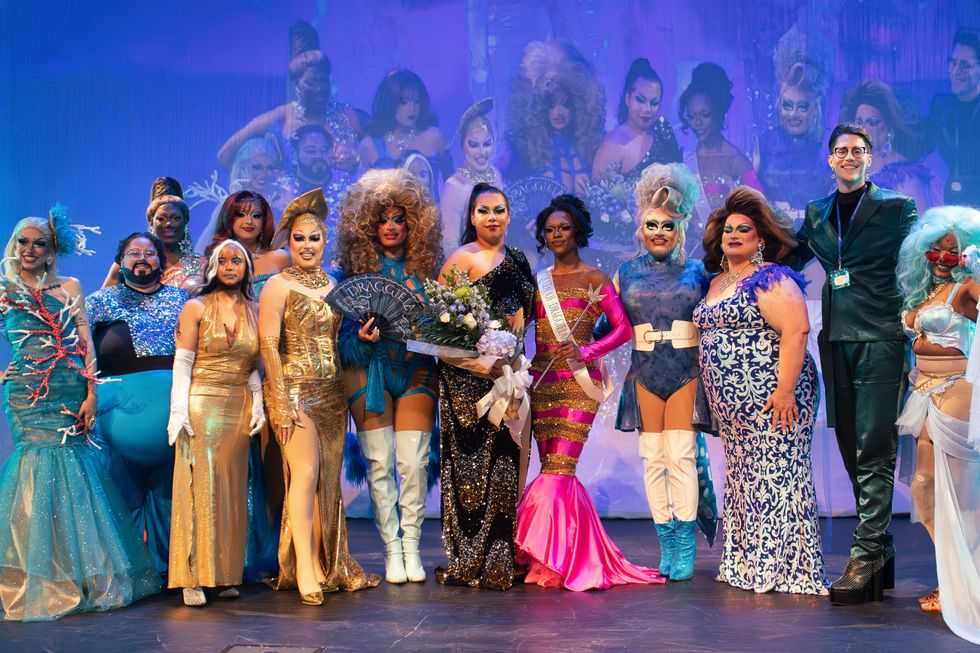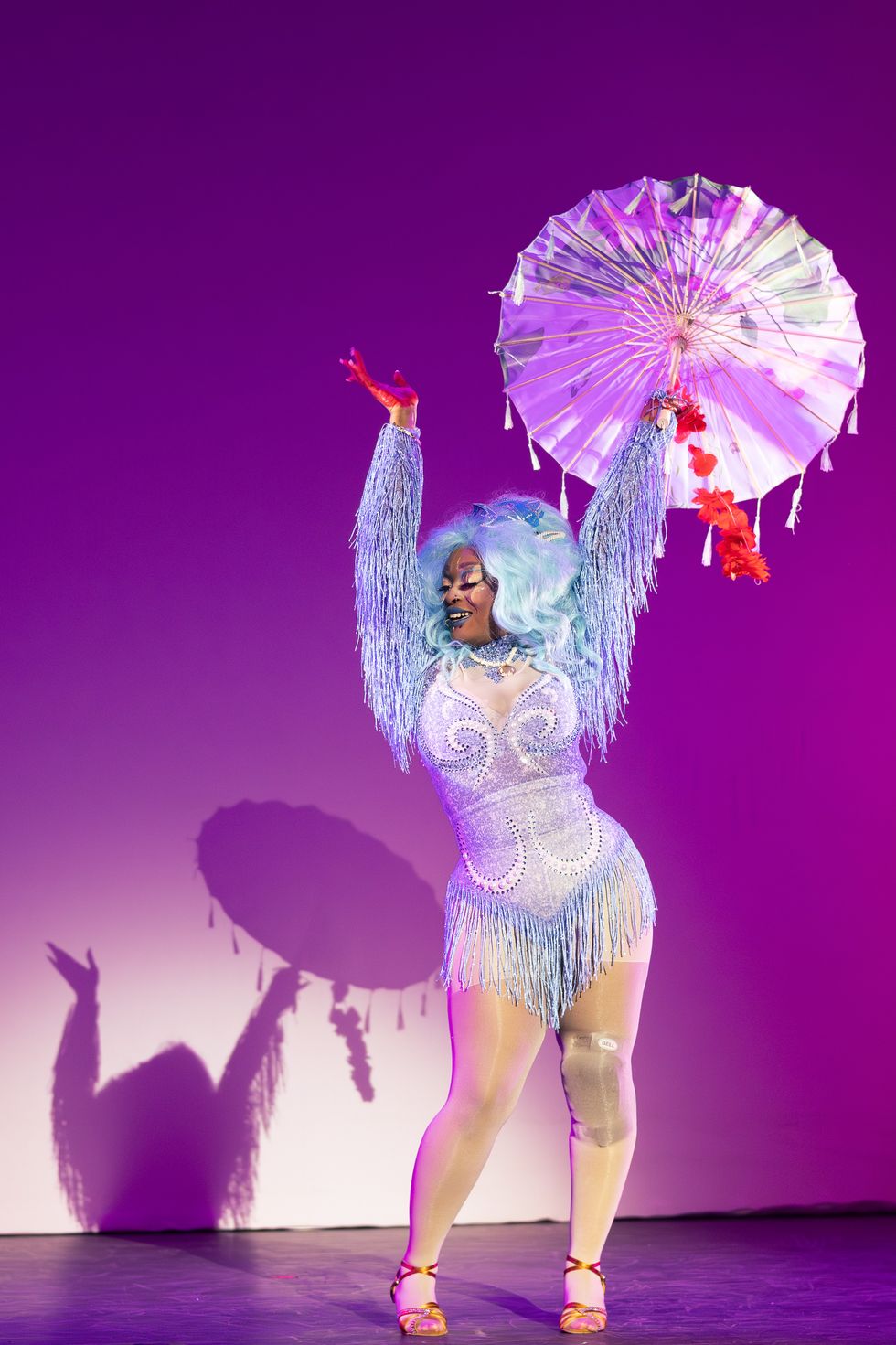This is a woman playing golf.
This is a man playing golf.
It sure seems like they’re playing the same sport, huh? You’d think the expectations surrounding their attire would reflect that, but a new controversial email sent out by the Ladies Professional Golf Association (LPGA) has thrown that into question.
And people definitely have some thoughts.
Earlier this month, the LPGA notified its players about updates in the organization’s dress code.
The email, sent by LPGA player president Vicki Goetze-Ackerman, listed a number of policies regarding players’ clothing and asked members to abide by the guidelines beginning July 17, 2017.
Here's how the email read, as Golf Digest pointed out:
- Racerback with a mock or regular collar are allowed (no collar = no racerback)
- Plunging necklines are NOT allowed.
- Leggings, unless under a skort or shorts, are NOT allowed
- Length of skirt, skort, and shorts MUST be long enough to not see your bottom area (even if covered by under shorts) at any time, standing or bent over.
- Appropriate attire should be worn to pro-am parties. You should be dressing yourself to present a professional image. Unless otherwise told “no,” golf clothes are acceptable. Dressy jeans are allowed, but cut-offs or jeans with holes are NOT allowed.
- Workout gear and jeans (all colors) NOT allowed inside the ropes
- Joggers are NOT allowed
As you might expect, the LPGA’s email sparked a wave of criticism online.
As Teen Vogue put it, the list “leaves you wondering, what is allowed?”
Policing what women wear on the golf course is taking a step backward (maybe even into a previous century), some argued.
“Plain and simple this is a mistake by the LPGA,” one Twitter user wrote. “The athletic wear is fine and crosses no line. #LetThemPlay”
But many people — most notably, several LPGA players themselves — don't see why people are making a fuss.
“There’s very minimal change to what our previous dress code is,” golfer Christina Kim — who’s currently competing in the LPGA tournament near Toledo, Ohio, this week — told The Detroit News. “I don’t know what people are making the hoopla about.”
Fellow pro golfer Paige Spiranac tweeted that she doesn’t think the dress code goes far enough.
Amid the backlash, it’s worth comparing these rules to the dress code for men competing in the PGA.*
(*Why the women's association has an “L” in its name while the men’s association apparently doesn’t need to clarify gender is an article for a different day.)
According to the PGA’s official website, its male “players shall present a neat appearance in both clothing and personal grooming. Clothing worn by players shall be consistent with currently accepted golf fashion.”
And that’s ... that.
The LPGA’s (very) detailed email to its players reflects a bigger societal problem.
Double standards between men and women’s athletic wear are nothing new.
In certain sports, standard attire requires girls and women to wear much less than their male counterparts while competing. But in other sports, women are expected to cover up. We seem to police female athletes’ bodies — in tennis arenas, swimming pools, volleyball courts, and more — with much more scrutiny than we do their male counterparts.
Regardless of the LPGA’s dress code, the fact the organization’s email sparked such strong responses shows this is a discussion we must keep having.
After all, athletes of all genders should be seen as competitors — as athletes capable of dressing in the clothes that enable them to be great at their sport — not as aesthetic objects to patrol.
“Policing these women's bodies and clothes takes away from their professional accomplishments,” Suzannah Weiss wrote for Teen Vogue. “And if the sport wants a positive image, body-shaming is not the way to get it.”















 Let us all bow before Gary, the Internet's most adventurous feline. Photo credit: James Eastham
Let us all bow before Gary, the Internet's most adventurous feline. Photo credit: James Eastham Gary the Cat enjoys some paddling. Photo credit: James Eastham
Gary the Cat enjoys some paddling. Photo credit: James Eastham James and Gary chat with Ryan Reed and Tony Photo credit: Ryan Reed
James and Gary chat with Ryan Reed and Tony Photo credit: Ryan Reed


 Rock deterioration has damaged some of the inscriptions, but they remain visible. Renan Rodrigues Chandu and Pedro Arcanjo José Feitosa, and the Casa Grande boys
Rock deterioration has damaged some of the inscriptions, but they remain visible. Renan Rodrigues Chandu and Pedro Arcanjo José Feitosa, and the Casa Grande boys The Serrote do Letreiro site continues to provide rich insights into ancient life.
The Serrote do Letreiro site continues to provide rich insights into ancient life.

 The contestants and hosts of Draggieland 2025Faith Cooper
The contestants and hosts of Draggieland 2025Faith Cooper Dulce Gabbana performs at Draggieland 2025.Faith Cooper
Dulce Gabbana performs at Draggieland 2025.Faith Cooper Melaka Mystika, guest host of Texas A&M's Draggieland, entertains the crowd
Faith Cooper
Melaka Mystika, guest host of Texas A&M's Draggieland, entertains the crowd
Faith Cooper


